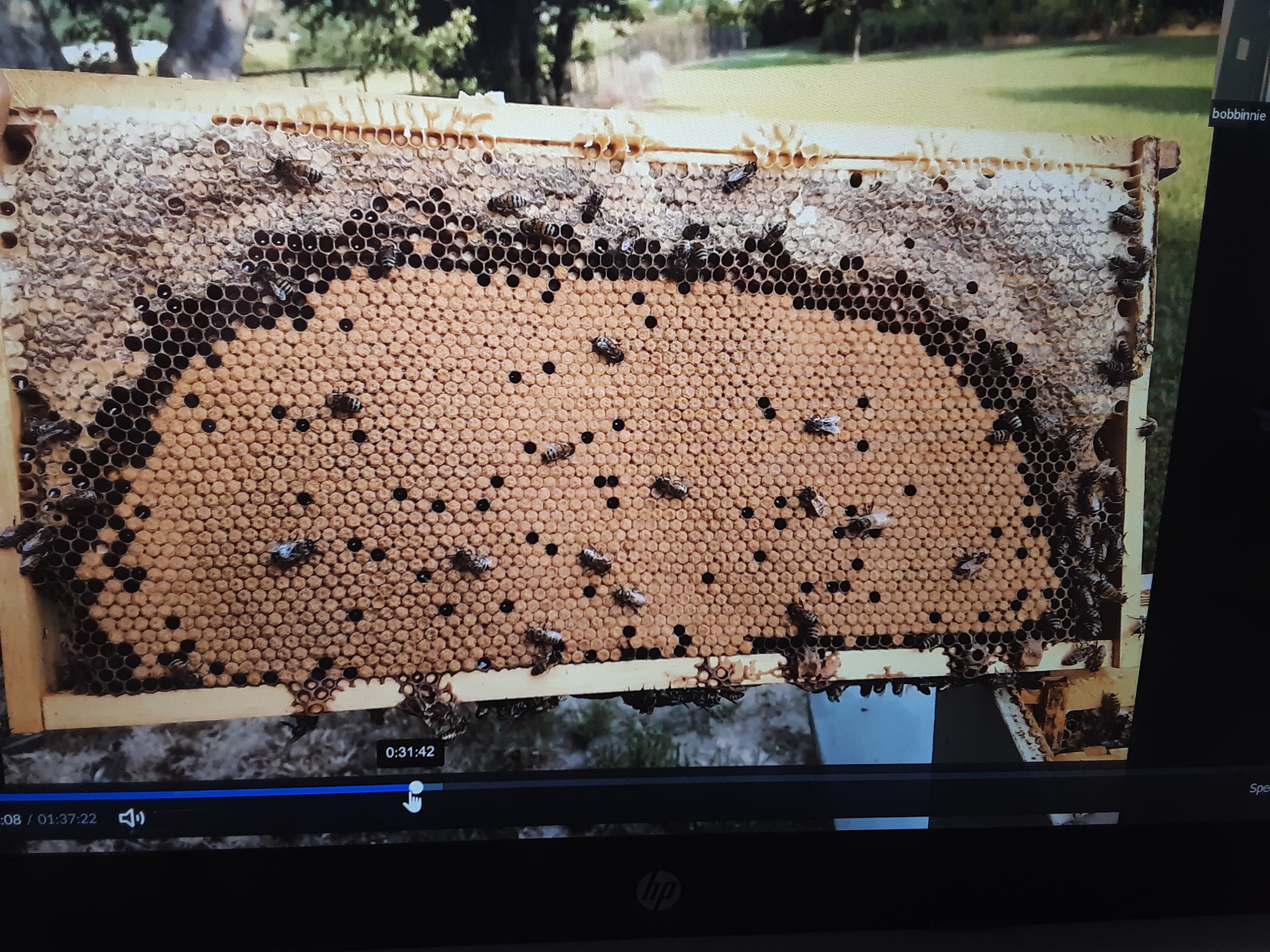Chilled brood may occur during a fall or spring cold snap or a sudden loss of adult population from, for example, pesticide poisoning. Dead larvae and pupae in cappedcapping:
the covering that bees add over comb cells containing fully ripened honey or to cap brood that has reached the pupal stage; bee bread cells are not capped cells turn blackish and begin to smell. Brood loss is normally at the margins of the brood spherebrood sphere:
cells turn blackish and begin to smell. Brood loss is normally at the margins of the brood spherebrood sphere:
a spherical or oval-shaped area that is formed by extending across two or more parallel combs in the hive and is used by bees to rear brood; its size is variable depending upon colony population size and seasonal factors.
or on the outermost brood frames. Queen chilling leads to failure to emerge.
Abandoned worker brood, which usually occurs at the margins or edge of the brood rearing area, will chill and not develop. Chilling typically occurs in spring when a rapidly developing colony is exposed to a cold snap, thus causing the adult cluster to fail to adequately cover the entire brood spherebrood sphere:
a spherical or oval-shaped area that is formed by extending across two or more parallel combs in the hive and is used by bees to rear brood; its size is variable depending upon colony population size and seasonal factors.
. Chilling may also occur in the fall when the bee cluster is too small to adequately cover the entire brood area, and especially with a sudden cold snap. Chilling can occur in the case of parasitic mite syndrome, when the bees raise too few bees to permit the colony to keep brood warm enough through the winter. In a deadout any brood rearing by the colony that includes capped brood will all become chilled and will die along with clustered adult bees. It can also happen when a colony suddenly loses its adult bee population due to, for example, swarm emergence or pesticide poisoning. Abandoned larvae will yellow and slowly become black. Chill-killed brood remains are often slowly removed by adult bees. CappedCapping:
the covering that bees add over comb cells containing fully ripened honey or to cap brood that has reached the pupal stage; bee bread cells are not capped cells with discolored, shrunken pupae are slowly uncapped and removed by adult bees.
cells with discolored, shrunken pupae are slowly uncapped and removed by adult bees.
Queens may become chilled in development and fail to properly develop to emergence or to adults during shipping of queens. Such queens may be replaced by the worker bees.
pesticide poisoning (adult loss); parasitic mite syndrome; especially uncappinguncapping:
the process of prematurely removing the capping from pupal cells; usually associated with hygienic bees looking for mites reproducing on pupae
of brood characteristic of hygienic behavior
Patterson R. n.d. Chilled brood: A condition of brood. David A. Cushman. Accessed 2023. http://dave-cushman.net/bee/chilledbrood.html
Poutiatine PI. 2011. A One-sided Film Worth Seeing. Rockpiles. Accessed 2023. https://rockpiles.wordpress.com/category/beekeeping/